Dedication
Title Page
Copyright Page
PREFACE
Acknowledgements
Chapter 1 - BACKGROUND
1.1 CLASSIFIERS AS PARTITIONS
1.2 USE OF DATA IN CONSTRUCTING CLASSIFIERS
1.3 THE PURPOSES OF CLASSIFICATION ANALYSIS
1.4 ESTIMATING ACCURACY
1.5 THE BAYES RULE AND CURRENT CLASSIFICATION PROCEDURES
Chapter 2 - INTRODUCTION TO TREE CLASSIFICATION
2.1 THE SHIP CLASSIFICATION PROBLEM
2.2 TREE STRUCTURED CLASSIFIERS
2.3 CONSTRUCTION OF THE TREE CLASSIFIER
2.4 INITIAL TREE GROWING METHODOLOGY
2.5 METHODOLOGICAL DEVELOPMENT
2.6 TWO RUNNING EXAMPLES
2.7 THE ADVANTAGES OF THE TREE STRUCTURED APPROACH
Chapter 3 - RIGHT SIZED TREES AND HONEST ESTIMATES
3.1 INTRODUCTION
3.2 GETTING READY TO PRUNE
3.3 MINIMAL COST-COMPLEXITY PRUNING
3.4 THE BEST PRUNED SUBTREE: AN ESTIMATION PROBLEM
3.5 SOME EXAMPLES
APPENDIX
Chapter 4 - SPLITTING RULES
4.1 REDUCING MISCLASSIFICATION COST
4.2 THE TWO-CLASS PROBLEM
4.3 THE MULTICLASS PROBLEM: UNIT COSTS
4.4 PRIORS AND VARIABLE MISCLASSIFICATION COSTS
4.5 TWO EXAMPLES
4.6 CLASS PROBABILITY TREES VIA GINI
APPENDIX
Chapter 5 - STRENGTHENING AND INTERPRETING
5.1 INTRODUCTION
5.2 VARIABLE COMBINATIONS
5.3 SURROGATE SPLITS AND THEIR USES
5.4 ESTIMATING WITHIN-NODE COST
5.5 INTERPRETATION AND EXPLORATION
5.6 COMPUTATIONAL EFFICIENCY
5.7 COMPARISON OF ACCURACY WITH OTHER METHODS
APPENDIX
Chapter 6 - MEDICAL DIAGNOSIS AND PROGNOSIS
6.1 PROGNOSIS AFTER HEART ATTACK
6.2 DIAGNOSING HEART ATTACKS
6.3 IMMUNOSUPPRESSION AND THE DIAGNOSIS OF CANCER
6.4 GAIT ANALYSIS AND THE DETECTION OF OUTLIERS
6.5 RELATED WORK ON COMPUTER-AIDED DIAGNOSIS
Chapter 7 - MASS SPECTRA CLASSIFICATION
7.1 INTRODUCTION
7.2 GENERALIZED TREE CONSTRUCTION
7.3 THE BROMINE TREE: A NONSTANDARD EXAMPLE
Chapter 8 - REGRESSION TREES
8.1 INTRODUCTION
8.2 AN EXAMPLE
8.3 LEAST SQUARES REGRESSION
8.4 TREE STRUCTURED REGRESSION
8.5 PRUNING AND ESTIMATING
8.6 A SIMULATED EXAMPLE
8.7 TWO CROSS-VALIDATION ISSUES
8.8 STANDARD STRUCTURE TREES
8.9 USING SURROGATE SPLITS
8.10 INTERPRETATION
8.11 LEAST ABSOLUTE DEVIATION REGRESSION
8.12 OVERALL CONCLUSIONS
Chapter 9 - BAYES RULES AND PARTITIONS
9.1 BAYES RULE
9.2 BAYES RULE FOR A PARTITION
9.3 RISK REDUCTION SPLITTING RULE
9.4 CATEGORICAL SPLITS
Chapter 10 - OPTIMAL PRUNING
10.1 TREE TERMINOLOGY
10.2 OPTIMALLY PRUNED SUBTREES
10.3 AN EXPLICIT OPTIMAL PRUNING ALGORITHM
Chapter 11 - CONSTRUCTION OF TREES FROM A LEARNING SAMPLE
11.1 ESTIMATED BAYES RULE FOR A PARTITION
11.2 EMPIRICAL RISK REDUCTION SPLITTING RULE
11.3 OPTIMAL PRUNING
11.4 TEST SAMPLES
11.5 CROSS-VALIDATION
11.6 FINAL TREE SELECTION
11.7 BOOTSTRAP ESTIMATE OF OVERALL RISK
11.8 END-CUT PREFERENCE
Chapter 12 - CONSISTENCY
12.1 EMPIRICAL DISTRIBUTIONS
12.2 REGRESSION
12.3 CLASSIFICATION
12.4 PROOFS FOR SECTION 12.1
12.5 PROOFS FOR SECTION 12.2
12.6 PROOFS FOR SECTION 12.3
BIBLIOGRAPHY
NOTATION INDEX
SUBJECT INDEX
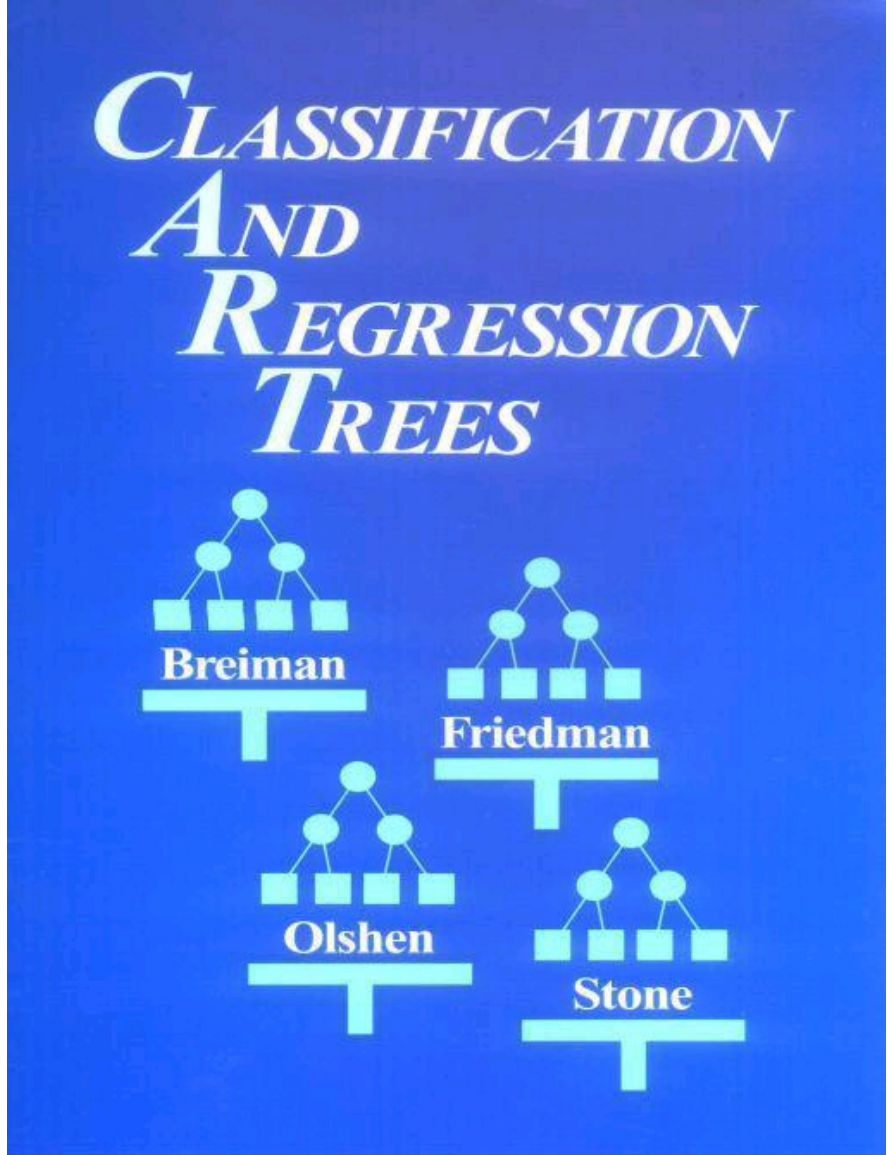
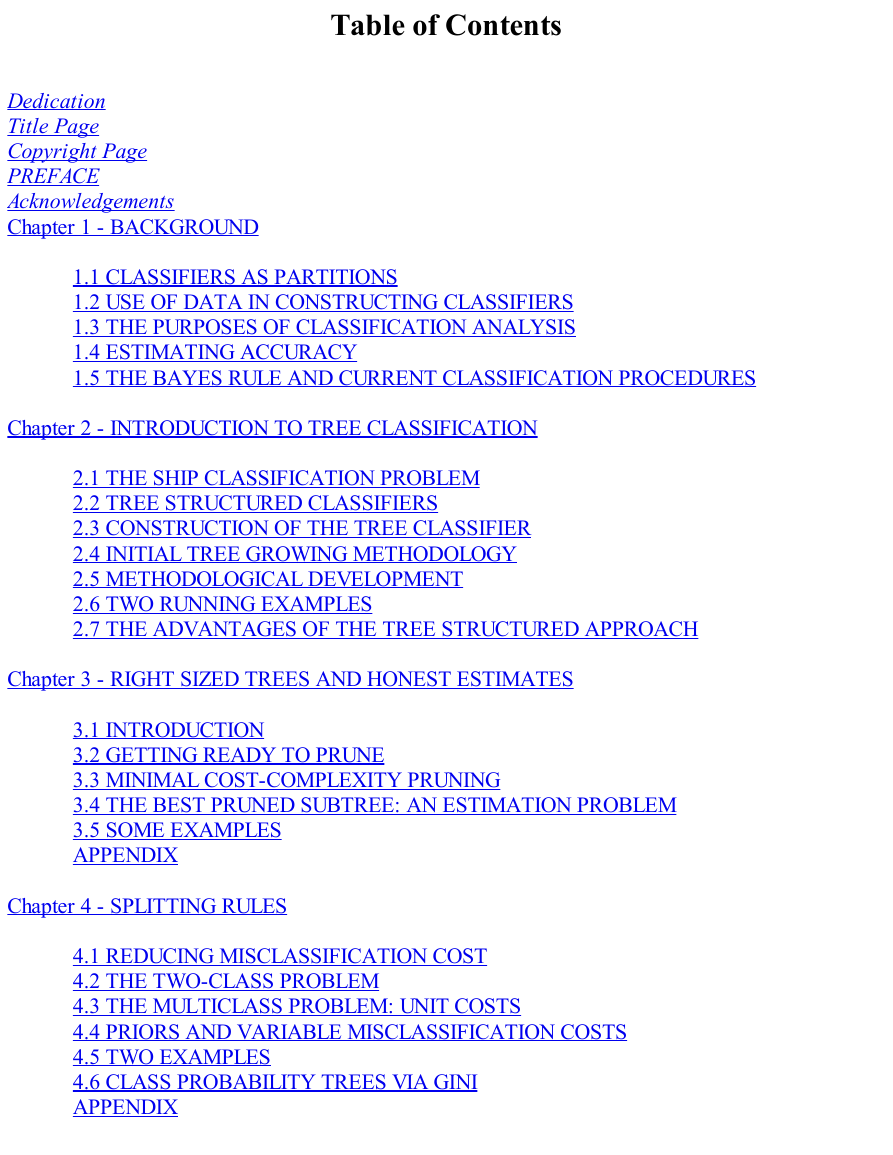
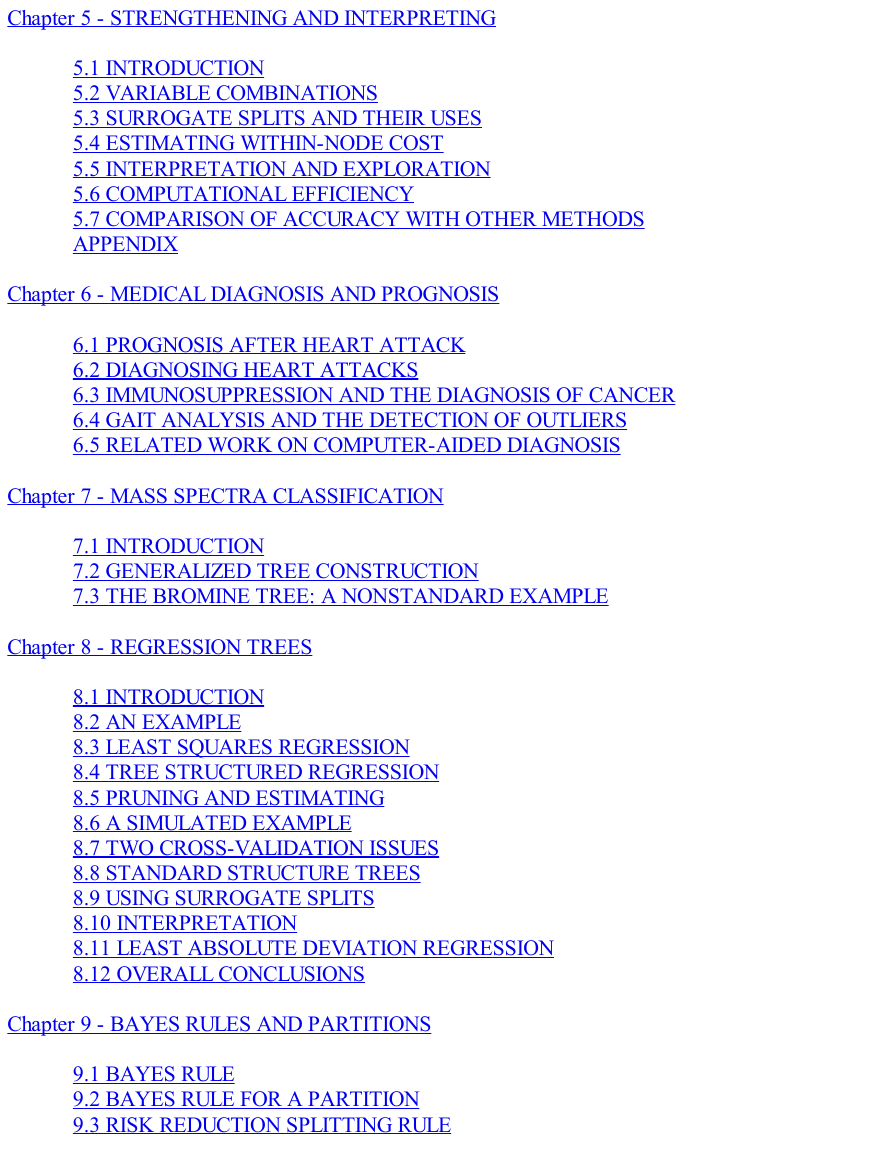
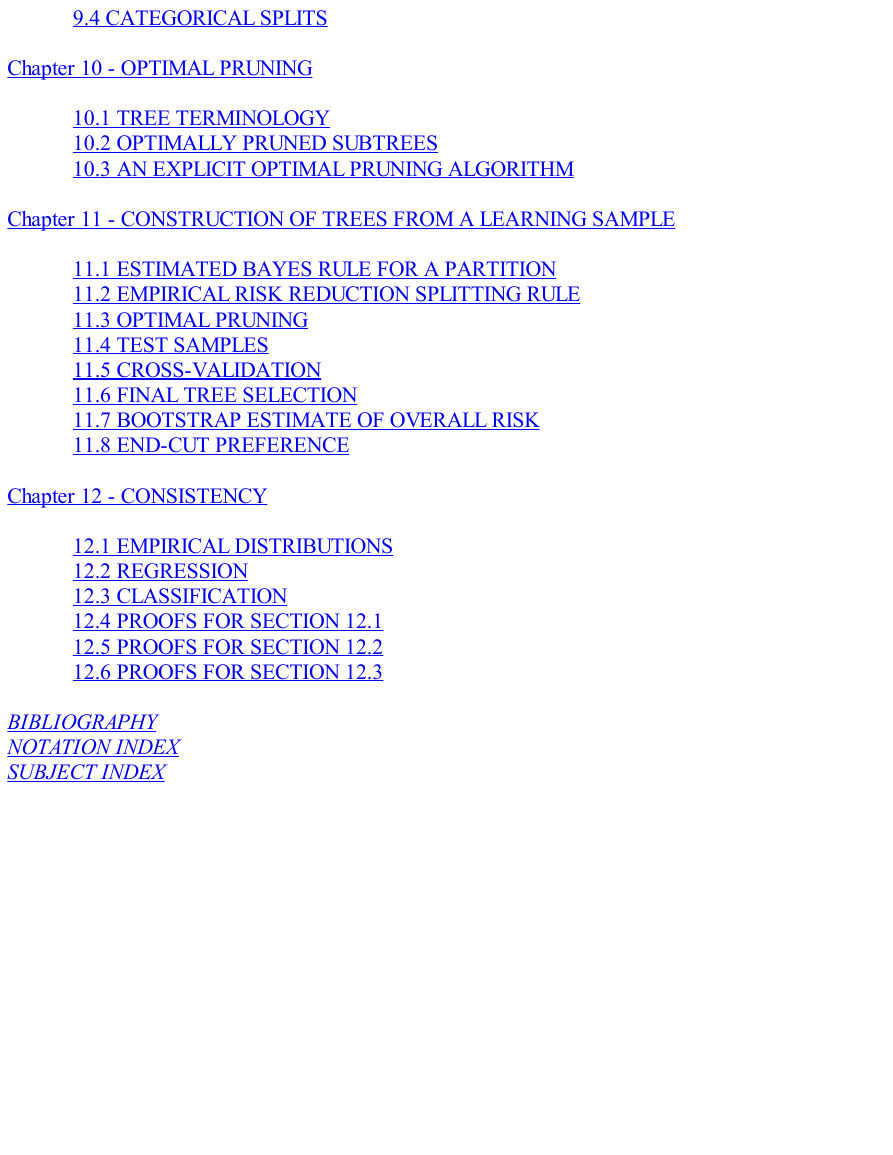

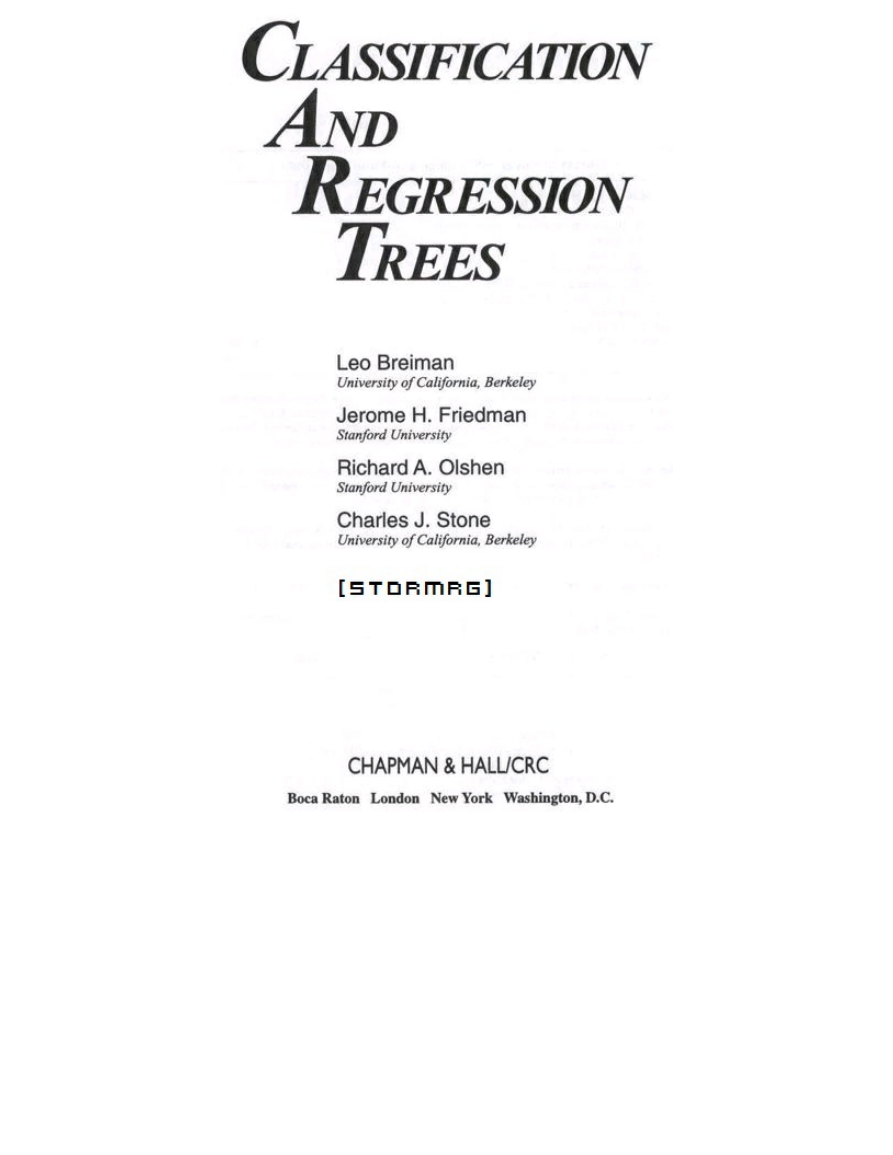
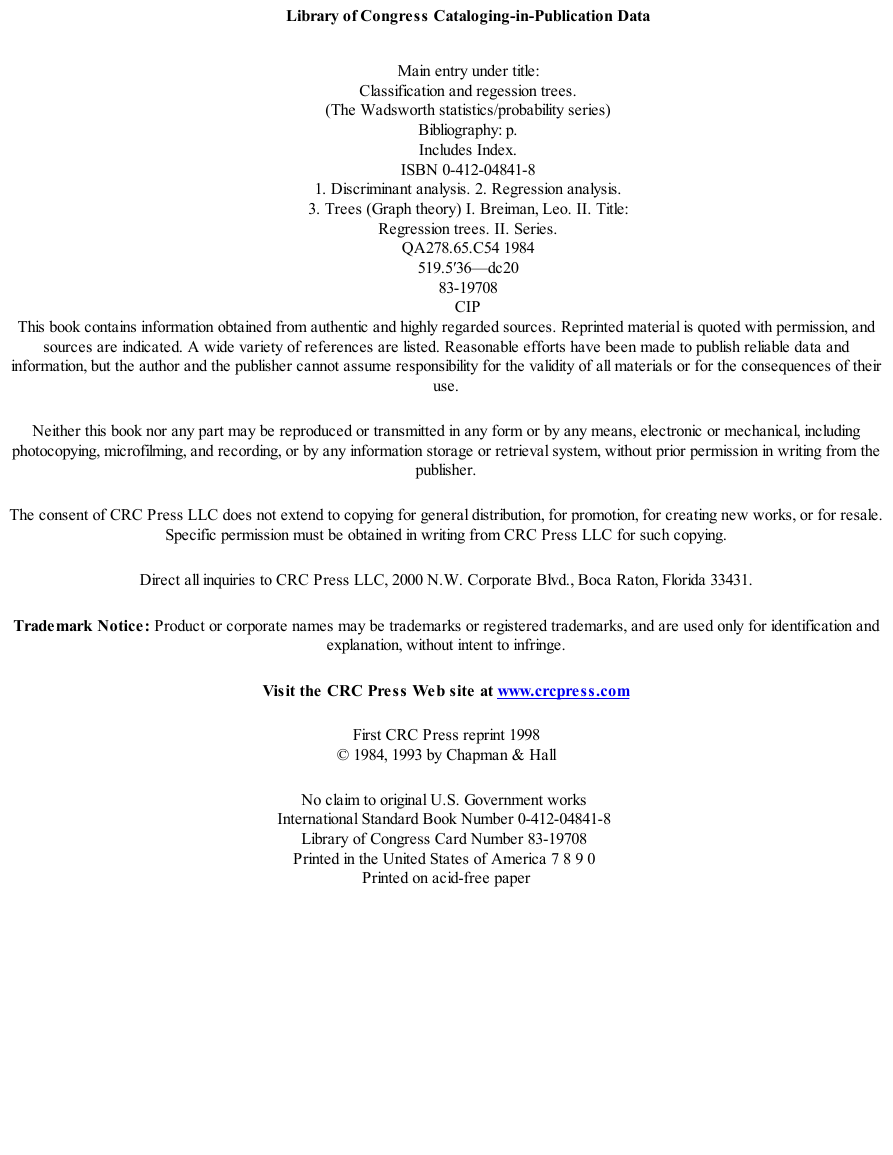
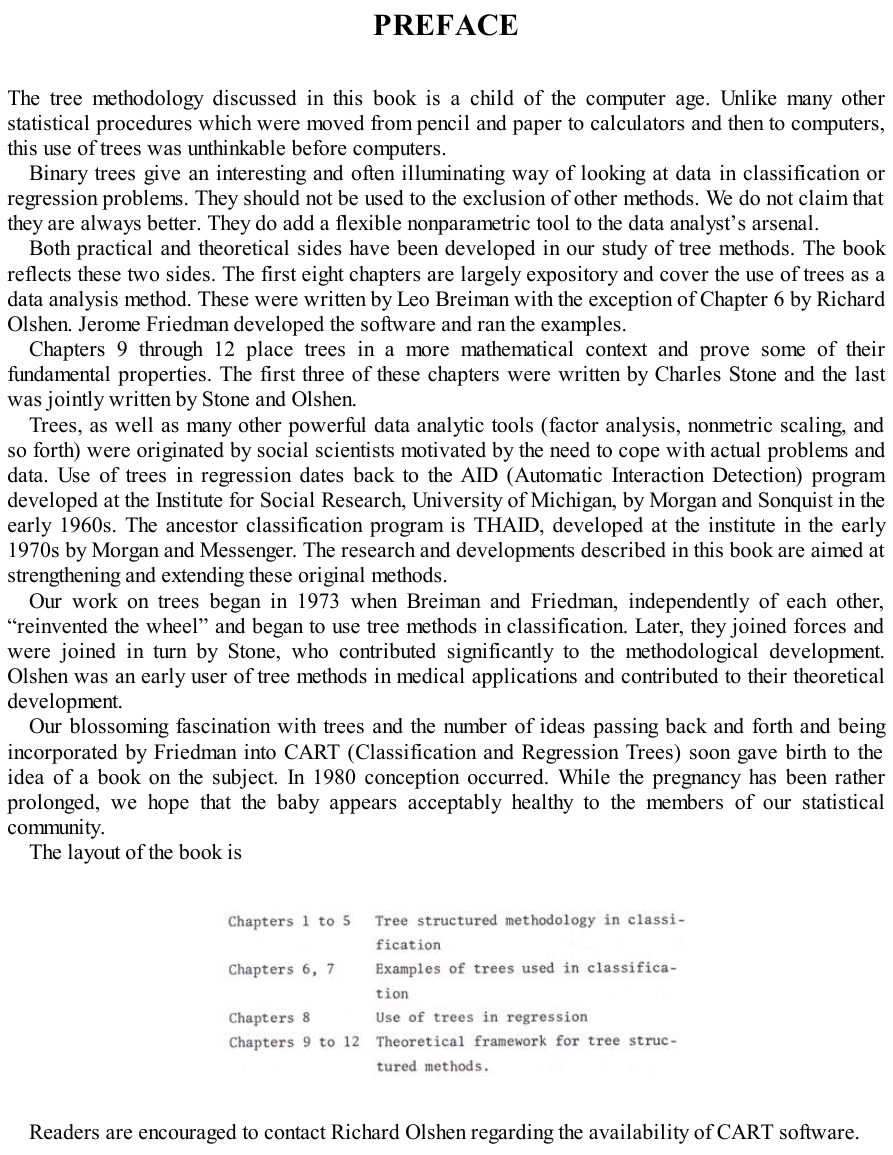








 2023年江西萍乡中考道德与法治真题及答案.doc
2023年江西萍乡中考道德与法治真题及答案.doc 2012年重庆南川中考生物真题及答案.doc
2012年重庆南川中考生物真题及答案.doc 2013年江西师范大学地理学综合及文艺理论基础考研真题.doc
2013年江西师范大学地理学综合及文艺理论基础考研真题.doc 2020年四川甘孜小升初语文真题及答案I卷.doc
2020年四川甘孜小升初语文真题及答案I卷.doc 2020年注册岩土工程师专业基础考试真题及答案.doc
2020年注册岩土工程师专业基础考试真题及答案.doc 2023-2024学年福建省厦门市九年级上学期数学月考试题及答案.doc
2023-2024学年福建省厦门市九年级上学期数学月考试题及答案.doc 2021-2022学年辽宁省沈阳市大东区九年级上学期语文期末试题及答案.doc
2021-2022学年辽宁省沈阳市大东区九年级上学期语文期末试题及答案.doc 2022-2023学年北京东城区初三第一学期物理期末试卷及答案.doc
2022-2023学年北京东城区初三第一学期物理期末试卷及答案.doc 2018上半年江西教师资格初中地理学科知识与教学能力真题及答案.doc
2018上半年江西教师资格初中地理学科知识与教学能力真题及答案.doc 2012年河北国家公务员申论考试真题及答案-省级.doc
2012年河北国家公务员申论考试真题及答案-省级.doc 2020-2021学年江苏省扬州市江都区邵樊片九年级上学期数学第一次质量检测试题及答案.doc
2020-2021学年江苏省扬州市江都区邵樊片九年级上学期数学第一次质量检测试题及答案.doc 2022下半年黑龙江教师资格证中学综合素质真题及答案.doc
2022下半年黑龙江教师资格证中学综合素质真题及答案.doc